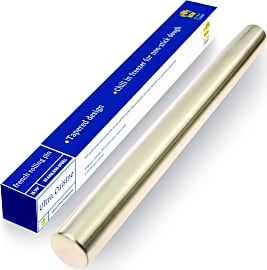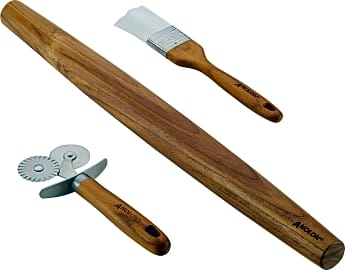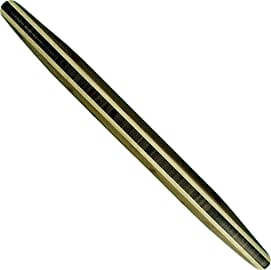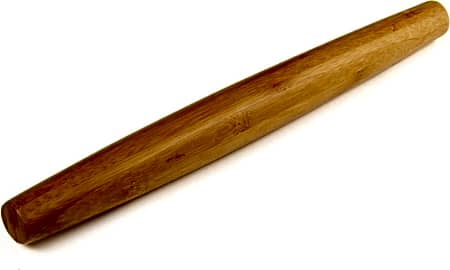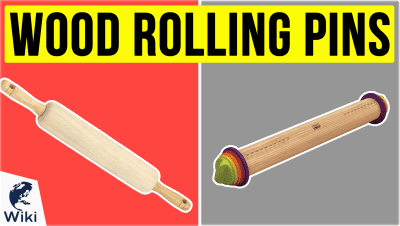The 8 Best French Rolling Pins

This wiki has been updated 20 times since it was first published in April of 2020. Creating delicious baked goods, such as breads, pastries, and pies, from scratch requires that you roll out your dough to a specific thickness. While you can always use an improvised device, like a wine bottle or a drinking glass, seasoned cooks understand that a French style pin offers more control and maneuverability than standard models, which come with a barrel surrounding two handles. When users buy our independently chosen editorial selections, we may earn commissions to help fund the Wiki.
Editor's Notes
May 29, 2020:
Selecting the appropriate rolling pin for your baking needs begins with making your first decision - traditional or French design. Traditional pins have handles to hold onto as the barrel rolls independently of the handles. French pins have no handles; instead, they are either tapered at the ends or dowel-shaped with no tapers. Either way, you hold the pin and have direct control over the pressure applied. French designs are a favorite among bakers because of the control and ease of maneuverability.
When selecting one, you will find that, just like traditional models, they are usually made from wood, marble, or steel. Wooden options, like the Earlywood Roller, are more porous than other materials, which means flour sticks to it longer, so you don't have to dust it as much. Wood is also not going to transfer the heat from your hands to the dough, making it warm and even more sticky.
Marble and steel options, like the Fox Run Roller and the RSVP International Endurance, are ideal for chilling in the freezer to keep the dough cool and easier to roll. They also have an elegant appearance, sleek and modern. Many models are safe for the dishwasher, which is a plus over wooden pins. These materials also do not absorb any odors or flavors from the dough, which is a possibility when you use a wooden pin, especially if you use the same pin for years. However, marble options are often on the heavier side, which can make it harder to maneuver, and flour doesn't stick to either marble or steel very well.


